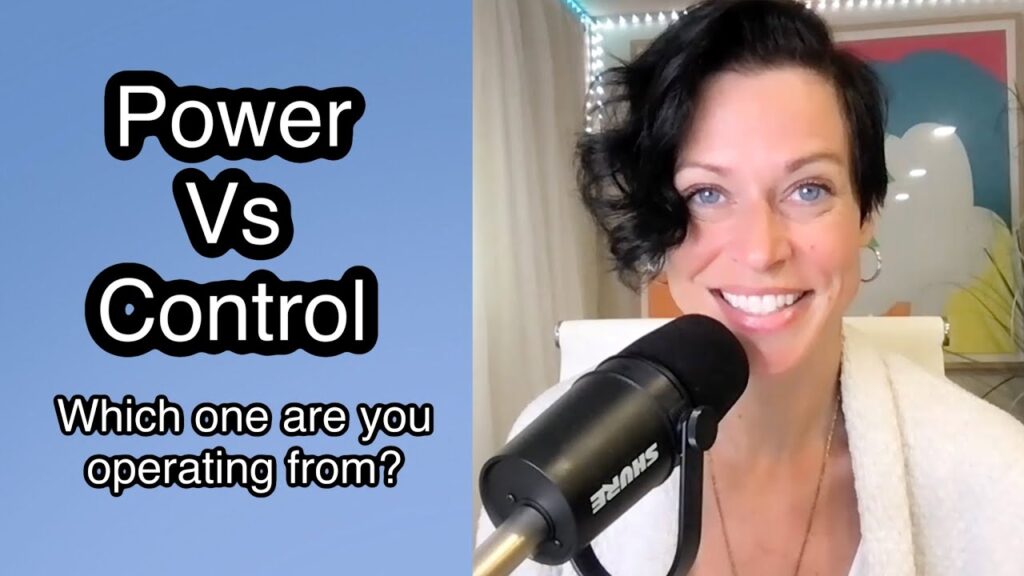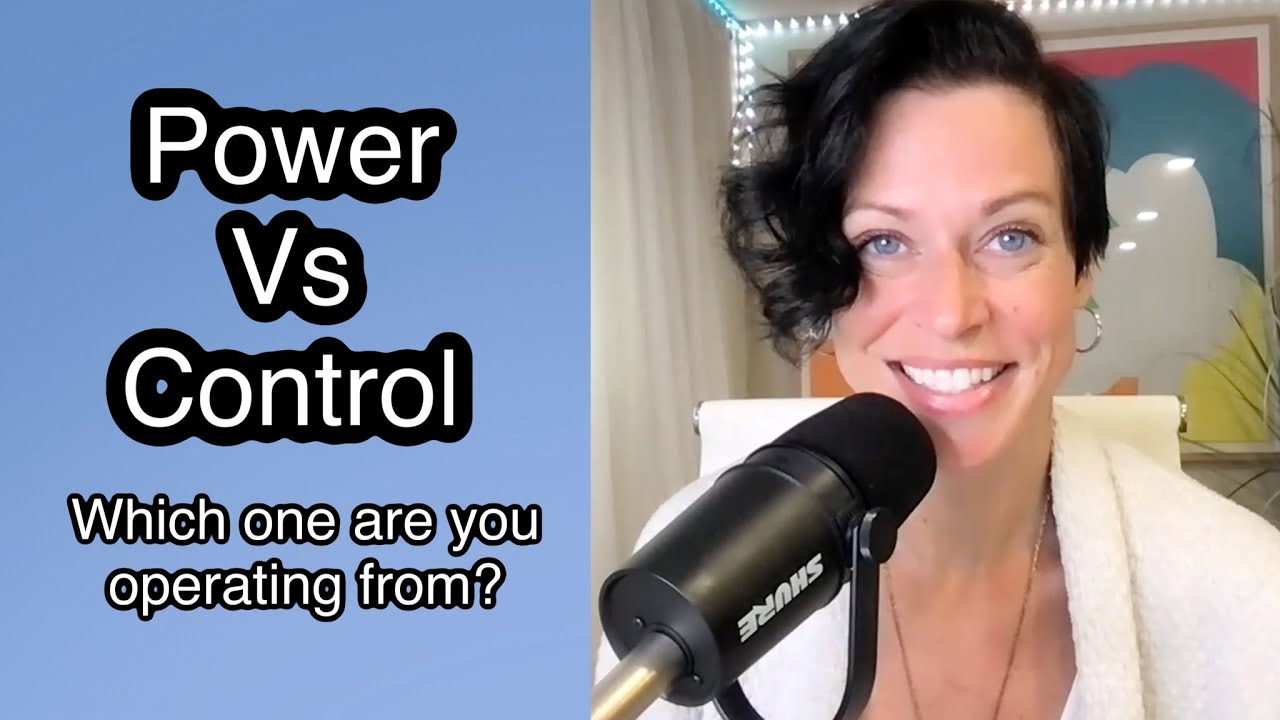
Power vs. Control: Understanding the Nuances in Leadership and Life
The terms “power” and “control” are often used interchangeably, but understanding the subtle differences between them is crucial, especially in leadership roles, interpersonal relationships, and personal development. While both concepts involve influence, their underlying motivations, methods, and outcomes differ significantly. This article delves into the distinctions between power vs control, exploring how each manifests in various contexts and the implications of prioritizing one over the other. We will examine the ethical considerations of power vs control and provide insights into fostering healthier, more effective dynamics in both professional and personal spheres.
Defining Power
Power, in its essence, is the ability to influence others. It can stem from various sources, including legitimate authority (positional power), expertise, charisma, or access to resources. Power is often associated with the capacity to achieve desired outcomes and to motivate others towards a common goal. It’s a fundamental aspect of leadership, enabling leaders to guide and inspire their teams. However, the responsible and ethical use of power is paramount.
There are different types of power. Legitimate power comes from an official position, such as a manager or CEO. Expert power arises from specialized knowledge or skills. Referent power is based on personal charisma and the ability to inspire admiration and loyalty. Reward power involves the ability to provide incentives, while coercive power relies on the threat of punishment. Understanding these different forms of power is essential for leaders aiming to wield influence effectively.
The Positive Aspects of Power
When used constructively, power can be a force for good. Leaders who exercise power responsibly can create positive change, drive innovation, and foster a thriving organizational culture. Power can empower others, providing them with the resources and opportunities they need to succeed. It can also facilitate collaboration and teamwork, enabling groups to achieve goals that would be impossible for individuals to accomplish alone.
- Empowerment: Distributing power to team members fosters autonomy and ownership.
- Motivation: Using power to recognize and reward achievements boosts morale and productivity.
- Vision: Leaders with power can articulate a compelling vision and inspire others to pursue it.
Defining Control
Control, on the other hand, is about maintaining order and predictability. It involves exerting influence to ensure that things happen according to a predetermined plan or standard. While control can be necessary in certain situations, such as ensuring safety or maintaining quality standards, an excessive focus on control can stifle creativity, innovation, and autonomy. It can also lead to a culture of fear and mistrust.
Control often manifests through rules, policies, and procedures. It can involve monitoring and surveillance to ensure compliance. Micromanagement is a common example of excessive control, where leaders closely supervise every aspect of their team’s work, leaving little room for independent decision-making. While control can create a sense of security and stability, it can also be detrimental to employee engagement and motivation.
The Pitfalls of Excessive Control
Over-reliance on control can have several negative consequences. It can stifle creativity and innovation, as individuals may be afraid to take risks or deviate from established norms. It can also lead to decreased motivation and engagement, as employees feel that their autonomy is being undermined. In extreme cases, excessive control can create a toxic work environment characterized by fear, mistrust, and resentment.
- Stifled Innovation: Rigid control can discourage experimentation and creativity.
- Decreased Motivation: Micromanagement can undermine employee autonomy and engagement.
- Toxic Culture: Excessive control can create a climate of fear and mistrust.
Power vs. Control: Key Differences
The key difference between power vs control lies in their underlying motivations and methods. Power is about influencing others towards a common goal, while control is about maintaining order and predictability. Power is often associated with inspiration and motivation, while control is often associated with rules and regulations. Leaders who understand these differences can use power more effectively and avoid the pitfalls of excessive control.
Another critical distinction is the focus of each concept. Power is often externally focused, aiming to influence the behavior of others. Control, on the other hand, can be both internal (self-control) and external (controlling others). While self-control is often viewed as a positive trait, external control can be perceived as manipulative or oppressive.
Consider the following table to further illustrate the differences:
| Feature | Power | Control |
|---|---|---|
| Motivation | Influence and inspire | Maintain order and predictability |
| Method | Motivation, persuasion, empowerment | Rules, regulations, monitoring |
| Focus | External (influencing others) | Internal and external |
| Outcome | Collaboration, innovation, growth | Compliance, stability, stagnation |
Ethical Considerations
The use of both power and control raises ethical considerations. Leaders must be mindful of the potential for abuse and ensure that they are using their influence responsibly. Power should never be used to exploit or manipulate others. Instead, it should be used to empower and uplift. Similarly, control should be exercised in a way that respects individual autonomy and promotes a culture of trust and transparency.
Transparency is key to ethical leadership. Leaders should be open about their intentions and motivations, and they should be willing to solicit feedback from their team members. They should also be accountable for their actions and take responsibility for any negative consequences that may arise. By prioritizing ethical considerations, leaders can build trust and foster a positive and productive work environment. [See also: Building Trust in Leadership]
Examples of Ethical Dilemmas
Consider a scenario where a manager has the power to promote one of two equally qualified employees. If the manager bases their decision on personal bias rather than objective criteria, they are abusing their power. Similarly, if a company implements strict surveillance policies to monitor employee behavior without a legitimate reason, they are exercising excessive control in an unethical manner.
Another example is a leader who uses coercive power to force employees to work long hours without compensation. This is not only unethical but also illegal in many jurisdictions. Ethical leaders understand the importance of treating their employees with respect and dignity, and they avoid using power or control in ways that could harm or exploit them.
Striking a Balance
The most effective leaders understand the importance of striking a balance between power and control. They use power to inspire and motivate their teams, while also implementing appropriate control mechanisms to ensure safety, quality, and compliance. They empower their employees to make decisions and take ownership of their work, while also providing clear guidelines and expectations.
This balance requires a nuanced understanding of the specific context and the needs of the team. In some situations, more control may be necessary, such as in high-risk industries or during times of crisis. In other situations, more power and empowerment may be appropriate, such as in creative or innovative environments. The key is to be flexible and adaptable, and to adjust the balance as needed.
Practical Tips for Leaders
- Communicate Clearly: Clearly articulate expectations and guidelines to avoid confusion and ambiguity.
- Empower Your Team: Delegate authority and provide opportunities for growth and development.
- Solicit Feedback: Regularly seek input from your team members to identify areas for improvement.
- Be Transparent: Be open about your intentions and motivations, and be willing to explain your decisions.
- Lead by Example: Demonstrate the behaviors and values that you want to see in your team members.
Applying Power vs. Control in Personal Life
The concepts of power vs control aren’t just applicable in professional settings. They also play a significant role in our personal relationships and individual well-being. Understanding the dynamics of power vs control in these contexts can lead to healthier and more fulfilling lives.
In relationships, power can manifest as the ability to influence decisions and support each other’s goals. A healthy relationship involves a balance of power, where both partners feel heard and valued. Control, on the other hand, can appear as attempts to dictate the other person’s actions or emotions. This can lead to resentment and conflict.
Examples in Relationships
A partner who consistently makes all the decisions without considering the other person’s input is exercising undue control. Conversely, a partner who supports their spouse’s career aspirations and provides encouragement is using power in a positive way. Recognizing these dynamics can help couples build stronger and more equitable relationships. [See also: Healthy Relationship Dynamics]
In personal development, self-control is a valuable asset. It allows us to manage our impulses, set goals, and achieve them. However, excessive control over our emotions or behaviors can lead to stress and anxiety. Finding a balance between self-control and self-acceptance is crucial for mental well-being.
Conclusion
Understanding the nuances between power vs control is essential for effective leadership, healthy relationships, and personal growth. While both concepts involve influence, their motivations, methods, and outcomes differ significantly. By prioritizing ethical considerations and striking a balance between power and control, individuals can foster more positive, productive, and fulfilling lives. Recognizing the difference between power vs control allows for more thoughtful and effective application of each in various facets of life, ultimately leading to more successful and harmonious outcomes.

